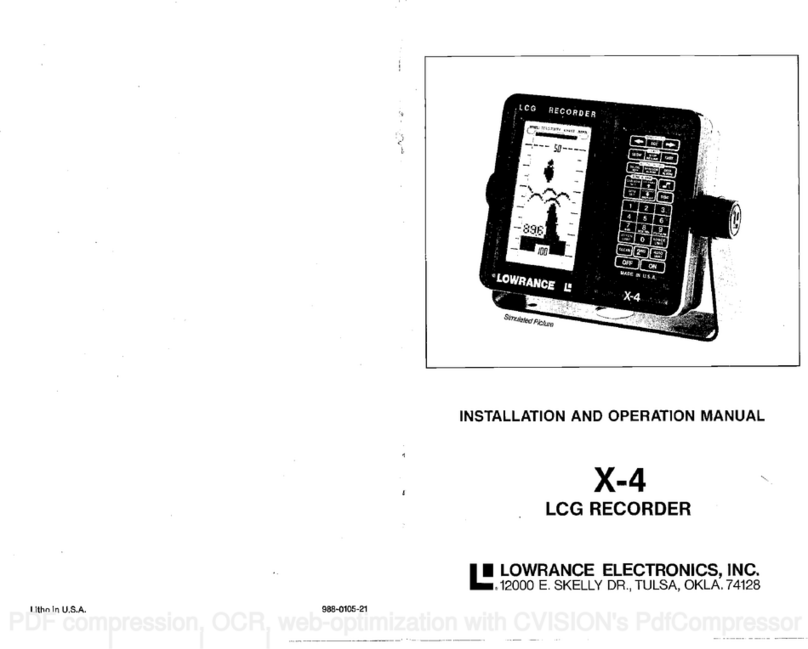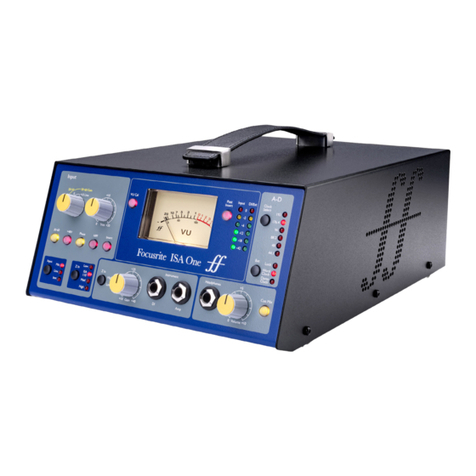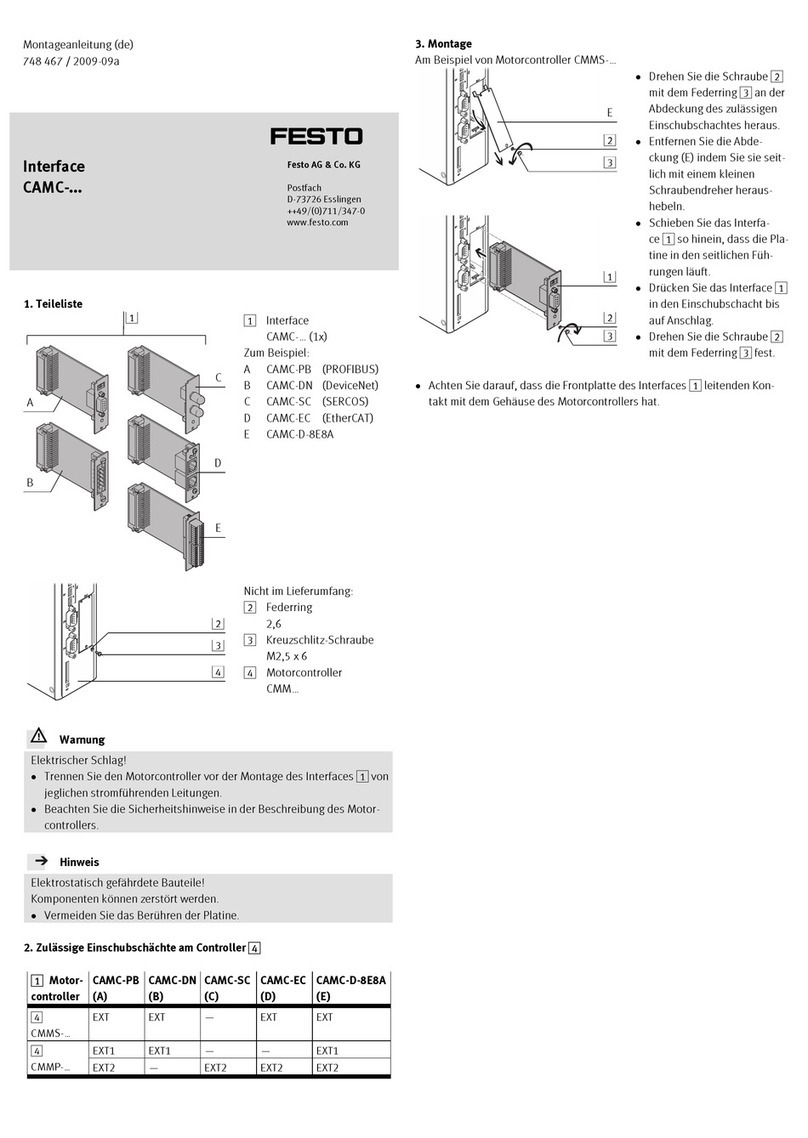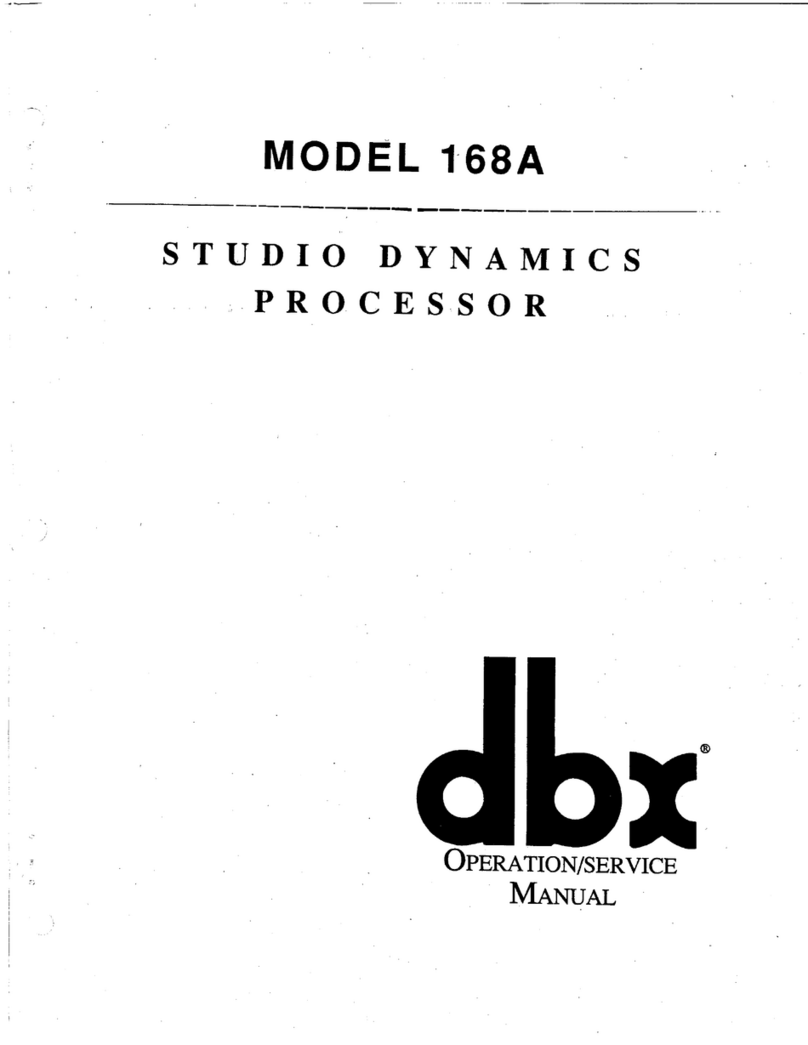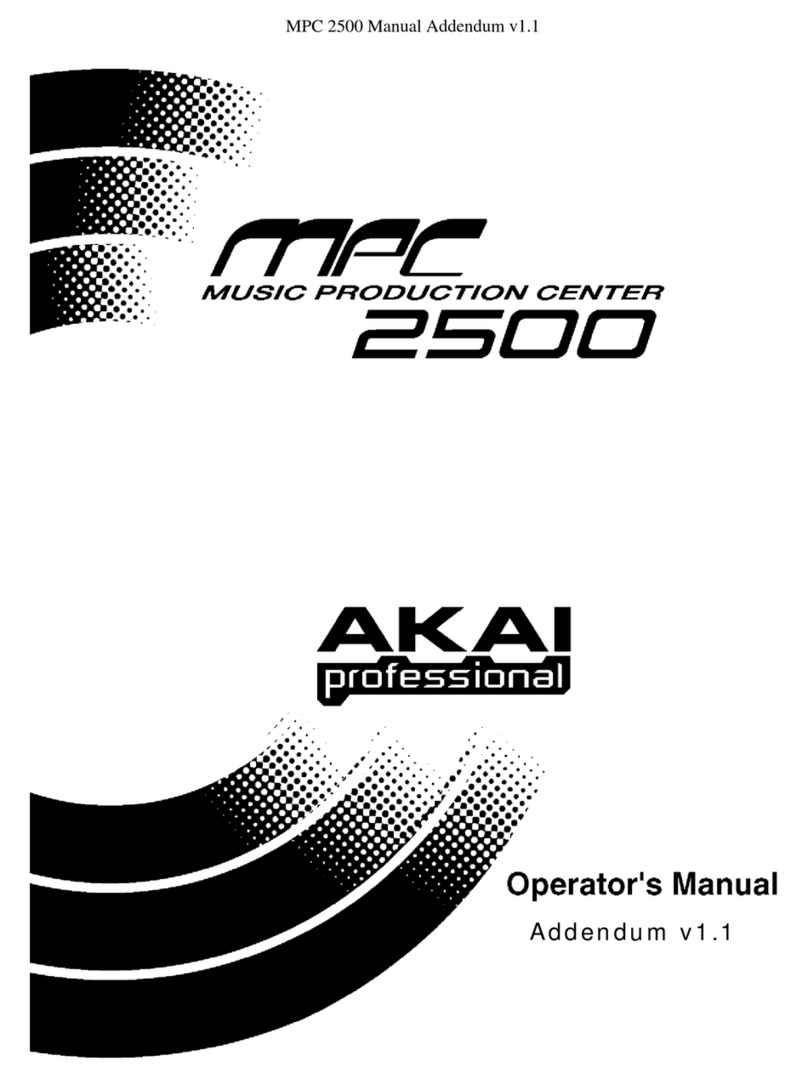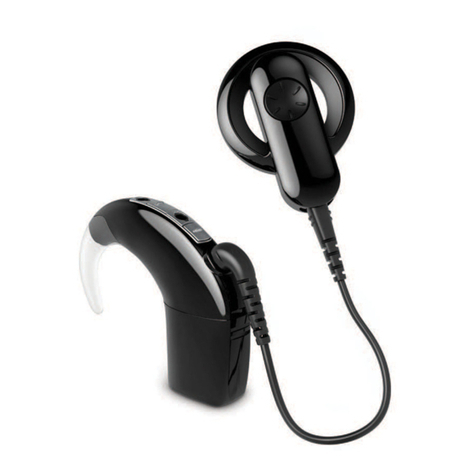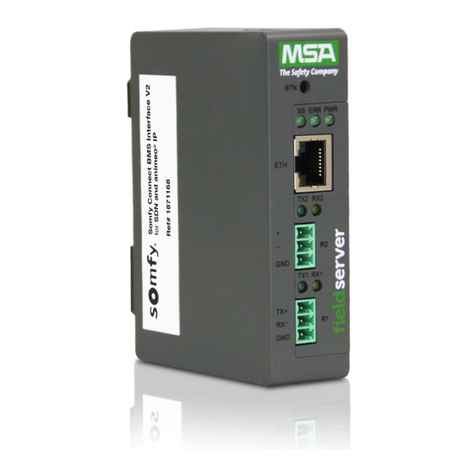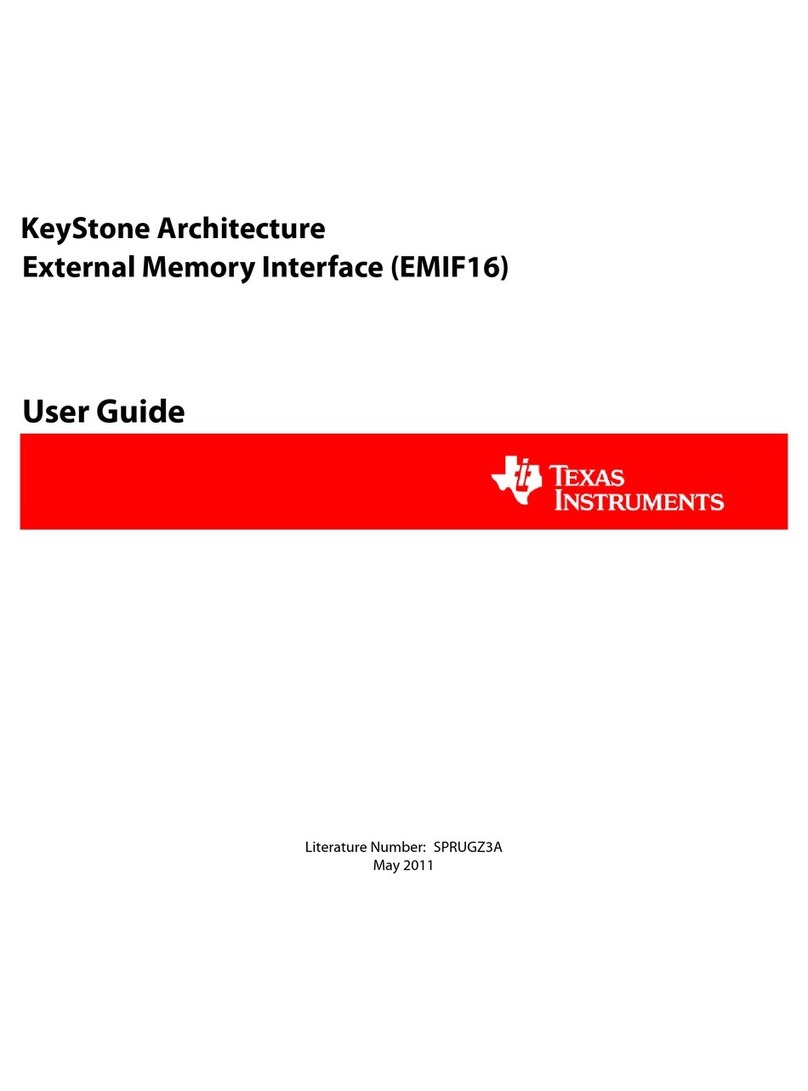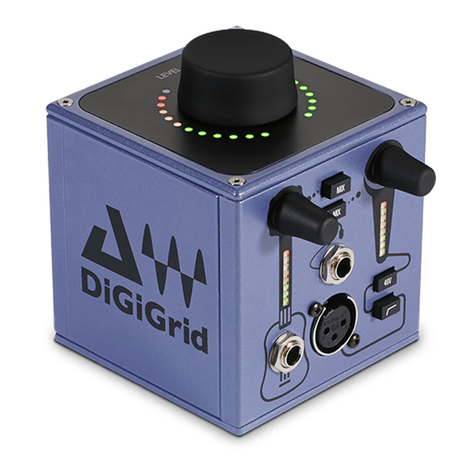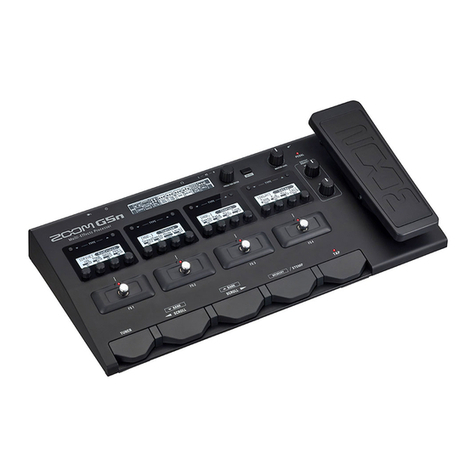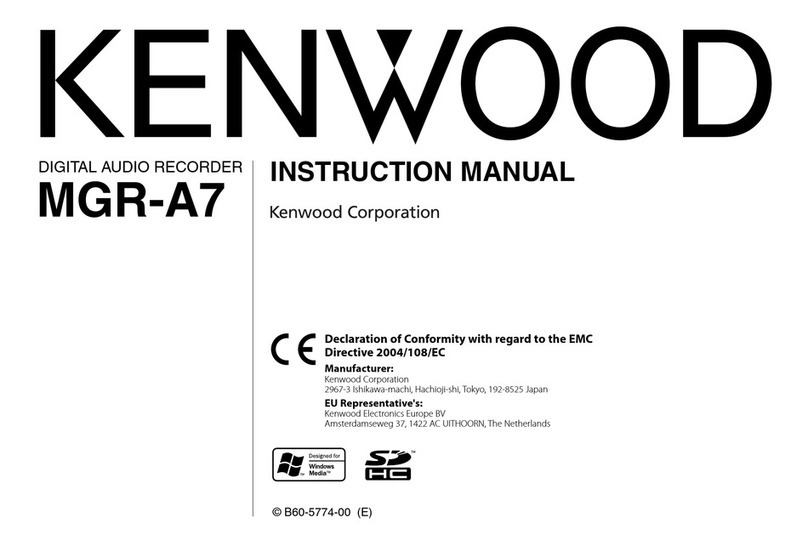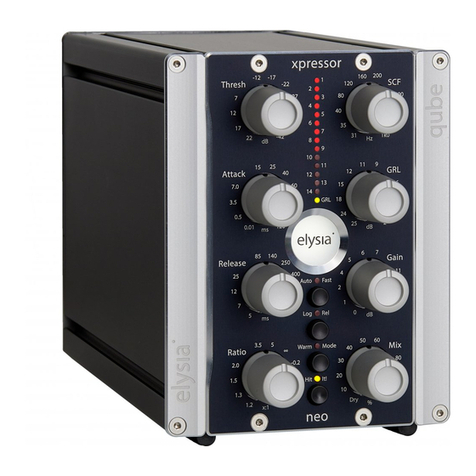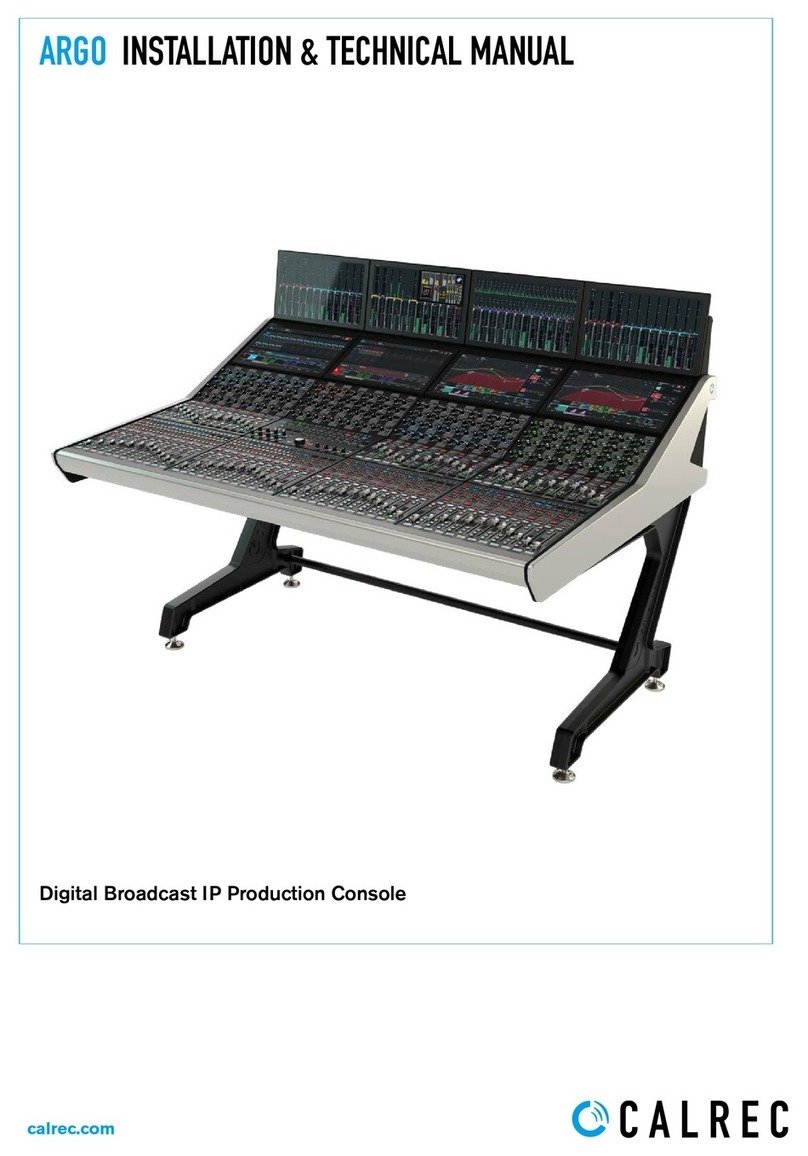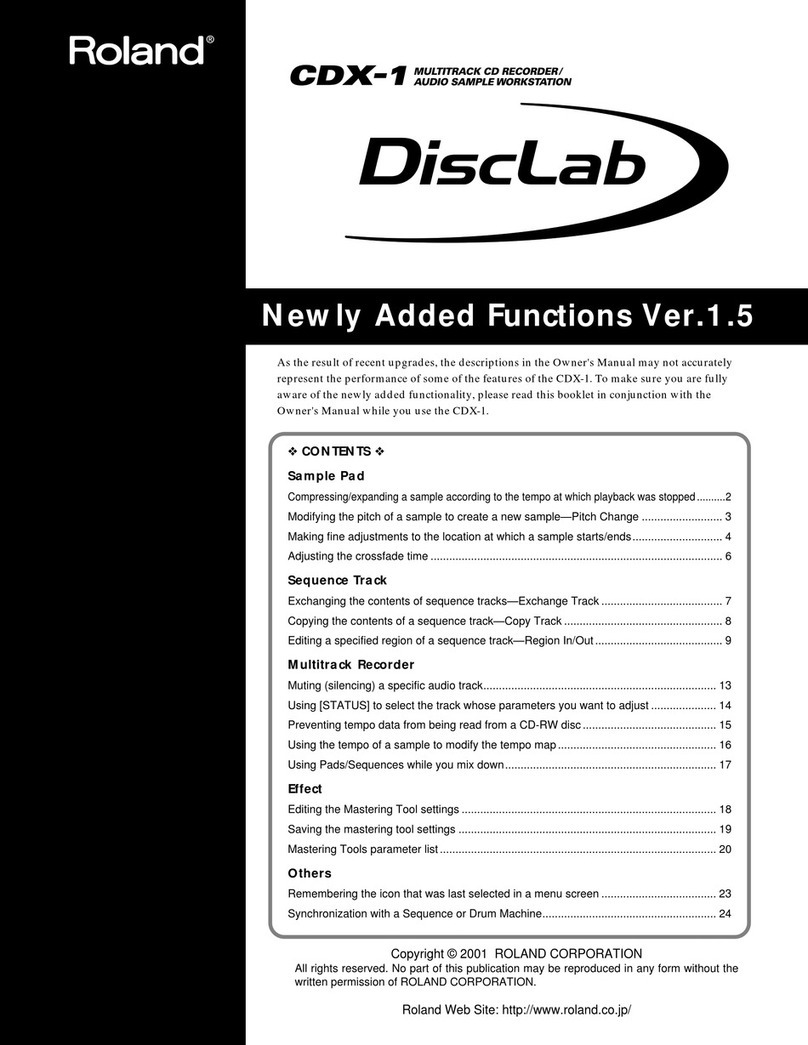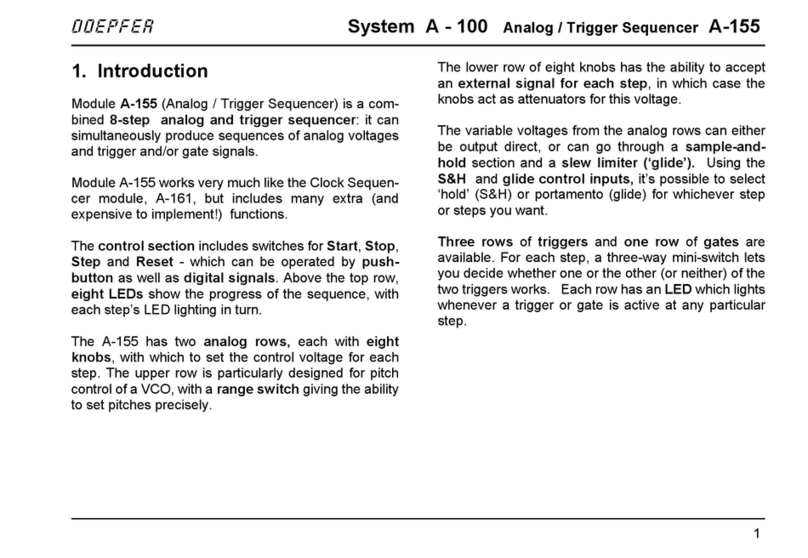Instrutech ITC-18/PCI User manual

USER’S MANUAL
Model: ITC-18/PCI
DATA ACQUISITION
INTERFACE
20 Vanderventer Avenue, Suite 101E
Port Washington, New York 11050-3752 U. S. A.
Tel: (516) 883-1300 Fax: (516) 883-1558
http://www.instrutech.com/
InstruTECH
Precision Instrumentation for Biological Research
Rev: 8, 2/4/2004 9:42 AM

INSTRUTECH CORPORATION ITC-18/PCI USER’S MANUAL
Table of Contents
Table of Contents........................................................................................................................ 2
Table of Figures .......................................................................................................................... 3
Credits ......................................................................................................................................... 4
1 General Information................................................................................................................ 5
1.1 Product intended usage ............................................................................................ 5
1.2 Accessories............................................................................................................... 5
1.3 Unpacking ................................................................................................................ 5
1.4 Purchase Information ............................................................................................... 7
1.5 Technical Specifications .......................................................................................... 8
1.6 Description............................................................................................................... 9
1.7 Explanation of symbols............................................................................................ 12
2 Controls and Functions ........................................................................................................... 13
2.1 Front Panel Controls ................................................................................................ 13
2.2 Rear Panel Controls ................................................................................................. 15
3 Installation............................................................................................................................... 18
3.1 Hardware installation ............................................................................................... 18
4 Important considerations......................................................................................................... 20
4.1 Warm up................................................................................................................... 20
4.2 Differential analog to digital inputs ......................................................................... 20
5 Troubleshooting ...................................................................................................................... 21
6 Additional Software ................................................................................................................ 22
6.1 Available Driver Software ....................................................................................... 22
6.2 Igor XOP’s ............................................................................................................... 22
7 Product Upgrades.................................................................................................................... 23
7.1 PCI-18 adaptability .................................................................................................. 23
8 Product Registration................................................................................................................ 24
8.1 Why Register your purchase? .................................................................................. 24
8.2 How to Register your purchase................................................................................ 24
8.3 Product announcement mailing list.......................................................................... 24
9 Rear Panel Connector PIN Assignments ................................................................................ 25
9.1 VR-10/100 Digital Data Recorder Connector.......................................................... 25
9.2 Serial I/O Connector ................................................................................................. 26
9.3 Current Driver Out Connector .................................................................................. 26
9.4 Digital I/O and Sequence Out Connector ................................................................. 27
9.5 Auxiliary Output Connector...................................................................................... 28
10 Warranty Information............................................................................................................ 29
10.1 Limited Warranty................................................................................................... 29
10.2 Obtaining Warranty Service................................................................................... 29
2

INSTRUTECH CORPORATION ITC-18/PCI USER’S MANUAL
Table of Figures
FIGURE 1. EXPLANATION OF SYMBOLS .......................................................................................................... 12
FIGURE 2: ITC-18 FRONT PANEL CONTROLS ............................................................................................... 13
FIGURE 3: ITC-18 REAR PANEL CONTROLS ................................................................................................. 15
FIGURE 4: ITC-18 CURRENT DRIVER OUT EXTERNAL CONNECTIONS......................................................... 16
FIGURE 5: ITC-18 VR-10/VR-100 CONNECTOR PINS ................................................................................... 25
FIGURE 6: ITC-18 SERIAL PORT CONNECTOR PINS ...................................................................................... 26
FIGURE 7: ITC-18 CURRENT DRIVER OUT CONNECTOR PINS ...................................................................... 26
FIGURE 8: ITC-18 DIGITAL I/O AND SEQUENCER OUT CONNECTOR PINS................................................... 27
FIGURE 9: ITC-18 AUXILIARY OUTPUT CONNECTOR PINS............................................................................ 28
3

INSTRUTECH CORPORATION ITC-18/PCI USER’S MANUAL
Credits
Instrutech Corporation would like to thank the following individuals who have contributed
their time and ideas to the development and testing of the ITC-18 computer interface:
Dr. Fred Sigworth, Yale University
Dan Brown, Bruxton Corporation
Dr. Hubert Affolter, Heka electronik
4

INSTRUTECH CORPORATION ITC-18/PCI USER’S MANUAL
1 General Information
1.1 Product intended usage
The Instrutech ITC-18/PCI is intended for research use only in a laboratory by persons
trained in its use. Users are expected to be able to properly operate the ITC-18/PCI and
associated instruments.
The Instrutech ITC-18/PCI is not intended for medical use. The Instrutech ITC-18/PCI is
not intended for use in life support situations, or in situations were improper operation or
failure of the ITC-18/PCI can result in personal injury.
Instrutech Corporation makes no representation that the design, implementation, testing, or
manufacture of the ITC-18/PCI meet reasonable standards for use as a medical product.
As stated in the Instrutech Limited Warranty Statement, supplied with each product,
“Instrutech Corporation expressly disclaims all warranties to buyer except the limited
warranty set forth above, including without limitation to any and all implied warranties of
merchantability and fitness for a particular purpose.”
1.2 Accessories
The following items should have been packed with your ITC-18/PCI Computer Interface:
1 Power cord, 110 volt or 220 volt type depending on application
1 ITC-18 Computer interface
1 PCI-18 PCI Bus computer plug in card
1 Cable assembly
1 ITC-18 Warranty card
1 PCI-18 Warranty card
1 User’s manual
If any of these items are missing please contact Instrutech Corporation immediately.
1.3 Unpacking
After unpacking the ITC-18 and accessories from the shipping carton, please inspect each
piece for any signs of shipping damage. Please contact the delivering carrier and
Instrutech Corporation immediately if there is any damage. Do not dispose of the shipping
carton. The carrier will want to examine the shipping carton to process a damage claim.
Instrutech Corporation insures all shipments to cover shipping damage. It is also advisable
to keep the shipping carton in the event that the instrument must be returned for service.
5

INSTRUTECH CORPORATION ITC-18/PCI USER’S MANUAL
Use caution when removing the PCI-18 computer plug-in card from the special static
shielding bag that it is packed in. This board is susceptible to damage and degradation by
static discharges. Do not remove the board from this static protection until you are ready
to install it into the computer. Touch the computer chassis to equalize the static charge
between yourself and the computer chassis before handling the computer board.
Following these steps is extremely important to prevent damage to the computer interface
card. Instrutech Corporation does not warranty the PCI-18 computer card from damage
caused by improper handling.
6

INSTRUTECH CORPORATION ITC-18/PCI USER’S MANUAL
1.4 Purchase Information
Take the time now, while getting started, to record some purchase information here. This
will make it easier to locate this information should this become necessary in the future.
Date of purchase: .......................................... ___________________________________
Dealer:........................................................... ___________________________________
Dealer telephone number: ............................. ___________________________________
Dealer fax number:........................................ ___________________________________
Dealer email address:.................................... ___________________________________
Contact name at dealer:................................. ___________________________________
ITC-18 Serial number: .................................. ___________________________________
PCI-18 Serial number: .................................. ___________________________________
Other notes:
_______________________________________________________________________
_______________________________________________________________________
_______________________________________________________________________
_______________________________________________________________________
_______________________________________________________________________
_______________________________________________________________________
_______________________________________________________________________
_______________________________________________________________________
_______________________________________________________________________
_______________________________________________________________________
_______________________________________________________________________
_______________________________________________________________________
_______________________________________________________________________
_______________________________________________________________________
_______________________________________________________________________
_______________________________________________________________________
_______________________________________________________________________
7

INSTRUTECH CORPORATION ITC-18/PCI USER’S MANUAL
1.5 Technical Specifications
Unless otherwise noted ambient temperature = 25 degrees Celsius
♦Analog Input Channels:
Channels: 8
Input Range: -10.24 volts to +10.23 volts
Gain: High-speed programmable gain (1, 2, 5, or 10X) instrumentation amplifier
Settling time: 3 microseconds (0.01% all gains)
Input Type: True Differential
Conversion Speed: Programmable, 5 µs (200 kHz) to 82 ms (12 Hz) in 1.25 µs steps
Resolution: 16 bit, 1 in 3200
Input impedance: 1 Meg ohm
Input connector: BNC
Absolute maximum input: ±40 volts peak
♦Analog Output Channels:
Channels: 4 with built-in thermal stabilization
Output Range: -10.24 volts to 10.23 volts
Output Type: Pseudo-differential
Conversion Speed: Programmable from 5 µs (200 kHz) to 82 ms (12 Hz) in 1.25 µs steps
Resolution: True 16 bit
Settling Time: Less than 4 us to 0.001%
Current drive capability: 20 milliamperes typical
Output impedance: 200 ohm
Output connector: BNC
♦Digital I/O Channels:
TTL Inputs: Sixteen CMOS compatible input lines with programmable sense level
(HIGH or LOW). Two modes of operation: latched or level sensing.
The latched mode will hold the value until read by the software. Level
sensing will change with all level transitions. Either mode requires an
input signal with a minimum duration of 150 nanoseconds. Four inputs
are available through BNC connectors on the front panel. All inputs are
available through a rear panel multi-pin connector. The absolute
maximum voltage range for these inputs is -0.5 volts to +5.5 volts. Do
not exceed this range or damage can result to the input circuitry.
TTL Outputs: Two banks (channels) with sixteen CMOS compatible output lines each.
Will drive AC, HC, ACT, HCT or a maximum of eight TTL loads. Four
outputs from channel 1 are available through BNC connectors on the
front panel. All outputs are available through a rear panel multi-pin
connector and internal connectors.
Driven Outputs: Fourteen current outputs (parallel with channel 1 output lines) divided
into two user banks. Each bank of 7 outputs can sink 350 milliamperes
maximum depending on number of outputs in use. An external power
source is required. Available on a female DB-25 connector on rear
panel.
8

INSTRUTECH CORPORATION ITC-18/PCI USER’S MANUAL
Trigger In: Start acquisition from an external unisolated CMOS compatible source.
Available through a BNC connector on the front panel. . The absolute
maximum voltage range for this input is -0.5 volts to +5.5 volts. Do not
exceed this range or damage can result to the input circuitry.
Trigger Out: Unisolated programmable trigger output. Available through a BNC
connector on the front panel.
Sequencer Out: Seven isolated programmable CMOS compatible trigger outputs. The
sequencer outputs are very precise triggers that can be programmed to
toggle when a particular entry in the sequence RAM is executed.
Available through a multi-pin connector on rear panel.
♦PCI-18 Host interface:
The PCI-18 PCI interface card is a 5 volt, slave PCI host card that interfaces the ITC-18 rack unit to the
host computer.
The PCI-18 card is compatible with version 2.0 of the PCI bus specification.
♦FIFO memory:
Standard: 1024 kilosample FIFO
♦External Clock:
Optional 12.8 megahertz external clock will synchronize multiple ITC-18 interfaces.
♦Dimensions:
W: 19", H: 1.75", D: 10.5", Weight: 8 pounds
W: 47.5 cm, H: 4.375 cm, D: 26.25 cm, Weight: 3.6 kg
♦Power requirements:
85-264VAC 47-440 Hz 15 Watts.
♦Warranty:
Two years parts and labor.
All technical specifications are nominal conditions and are subject to change without notice.
1.6 Description
The ITC-18 is the second generation computer interface from Instrutech Corporation. The
ITC-18 offers increased capability while retaining all of the exceptional features of it’s
predecessor, the ITC-16. The ITC-18 advances data acquisition to a new level!
Hardware Configuration:
The ITC-18 is a rack-mountable unit. It has BNC connectors for the analog inputs
and outputs and ribbon-cable connectors for the digital lines.
9

INSTRUTECH CORPORATION ITC-18/PCI USER’S MANUAL
The ITC-18 is connected to a host computer over a shielded cable to a host
interface card. Host interfaces boards are available for ISA bus, PCI bus and
NUBUS. Moving the ITC-18 from one platform to another is a simple matter of
replacing the host interface board.
This configuration is unique to data acquisition units. Most data acquisition
devices are printed circuit-boards installed directly in the computer itself. The
interior of a computer is an electrically noisy environment. At the very high speeds
of modern computers, even a short length of a conductive trace on a PC board acts
as an antenna. Certain kinds of data acquisition devices are not affected by such
noise (e.g. slow-speed integrating A/D converters), but high speed high-resolution
A/D and D/A converters like the ones used in the ITC-18 are affected by such
noise. Mounting the electronics in an external box is the most effective way of
reducing this noise.
Optical Isolation:
The analog electronics of the ITC-18 are optically isolated from the digital
electronics and the computer. This provides complete electrical isolation between
the computer and the measurement.
The optical isolation is provided to eliminate computer electrical noise from the
analog measurements. Computers contain digital electronics that switch at high
speed, producing large electrical transients. The computer ground functions as the
return path for these transients, resulting in substantial high-frequency ground
noise. The ITC-18 has a completely separate analog ground that is isolated from
the computer ground. Computer ground noise is not coupled into the measurement.
Optical isolation is almost essential if low-noise analog outputs are provided. If the
analog outputs are not electrically isolated from the computer ground, the analog
output ground will contain computer-generated noise. This is one of the major
ways by which computer-generated noise is introduced into a measurement system.
The optical isolation of the ITC-18 brings with it another benefit that simplifies
complex measurement systems. Since the analog inputs and outputs of the ITC-18
float with respect to ground, the ITC-18 and computer are not a source of ground
loop problems.
Analog Circuitry:
The ITC-18 provides eight 18 bit A/D converters that feature individually
programmable input range of +1, +2, +5, or +10 volts. Using separate A/D
converters for each analog input channel eliminates crosstalk between channels and
improves the frequency response of the analog inputs.
10

INSTRUTECH CORPORATION ITC-18/PCI USER’S MANUAL
Typical data acquisition devices use a single A/D converter with a multiplexer to
select between input channels. The multiplexer, usually an integrated circuit, is a
single point where all analog input signals connect. Crosstalk, both from the
multiplexer itself and from closely-spaced printed-circuit board traces, causes
signals appearing at one analog input to appear at other inputs as well. The amount
of crosstalk is usually frequency- dependent. High-frequency signals can be
affected significantly.
The ITC-18 design is particularly important when making measurements using
multiple high-frequency signal sources and analyzing the signals for correlation.
An added benefit to the ITC-18 design is that all analog inputs can be sampled
simultaneously. This simplifies analysis of high-frequency correlation between
signals, since there is no time offset between sample points on the input channels.
The ITC-18 provides four 18 bit D/A converters that feature high accuracy with
less than 1 bit (~300 microvolts) of noise.
The ITC-18 provides sixteen digital input channels that feature level sensitive
(normal or inverted polarity) or latched modes for maximum versatility. Thirty-
two digital output channels, fourteen capable of current sink, for controlling
perfusion valves and other devices. Six programmable sequencer outputs for
precise triggering from any entry in the sequence RAM. All analog and digital
input and output channels are sampled simultaneously for maximum precision.
The ITC-18 can access the A/D, D/A and digital I/O channels in any sequence.
This provides the ability of different sampling rates for each channel.
FIFO Memory:
The ITC-18 is supplied with a large 1024 kilosample dynamically allocatable FIFO
memory for input and output data. The ITC-18 allows data acquisition to be
performed independent of the activity of the host computer. A large FIFO memory
allows for increased acquisition speed while minimizing the use of computer
resources.
The ITC-18 costs more than low-cost data acquisition devices, which are built as printed
circuit boards mounted in a computer, without electrical isolation and multiplexing a single
A/D converter. For this extra cost, it provides a major improvement in the quality of
acquired data, making measurements possible that would not otherwise be feasible.
11

INSTRUTECH CORPORATION ITC-18/PCI USER’S MANUAL
1.7 Explanation of symbols
Symbol Description
Alternating current
Currant alternatif
Wechselstrom
Corriente alterna
Corrente variabile
On (Supply)
Allumé (alimentation)
An (Netz)
Encendido (suministro)
Sotto tensione
Off (Supply)
Éteint (alimentation)
Aus (Netz)
Apagado (suministro)
Fuori tensione
Caution
Attention
Vorsicht
Cuidado
Cautela
Protective conductor terminal
Borne du conducteur de protection
Schutzleiterpol
Terminal de conductor protector
Morsetto di filo di protezione
Figure 1. Explanation of symbols
12

INSTRUTECH CORPORATION ITC-18/PCI USER’S MANUAL
2 Controls and Functions
2.1 Front Panel Controls
Circled numbers reference to the diagram of the front panel.
DAC OUTPUT
ITC-18 COMPUTER INTERFACE INSTRUTECH Corporation, Great Neck, N.Y. USA
SIGNAL
READY 0123 01234567
ADC INPUT TTL INPUT
TTL OUTPUT
0123
0123
23
5
4
6
7
8
POWER
1
GROUND TRIG IN
TRIG OUT
9
Figure 2: ITC-18 Front Panel Controls
1READY indicator:
The ready indicator will be illuminated when the ITC-18 has been properly
initialized by the host computer and the acquisition software. If this indicator is
not illuminated then the ITC-18 cannot function properly.
2POWER indicator:
The power indicator will be illuminated when the ITC-18 has been powered on.
The ITC-18 uses circuitry that will automatically switch the internal power
supply when the computer is started or shutdown.
3DAC outputs:
Four BNC connectors provide access to the four individual deglitched 16 bit
digital to analog converter outputs. All DAC outputs are thermally stabilized to
reduce drift. The digital to analog converter output voltages and timings are
controlled by the acquisition software. The DAC channels have an output
range of -10.24 to +10.23 volts. These channels are optically isolated from the
computer.
13

INSTRUTECH CORPORATION ITC-18/PCI USER’S MANUAL
4ADC inputs:
Eight BNC connectors provide access to the eight individual 16 bit analog to
digital converter input channels. Each A/D channel uses a high speed
programmable gain instrumentation amplifier to provide individually selectable
gain. Analog to digital converter channel selection and sampling interval
timing is controlled by the acquisition software. The ADC channels have an
input range of -10.24 to +10.23 volts. These channels are optically isolated
from the computer. These channels are differential inputs. If the BNC
connector shield is left unconnected unexpected results can occur. Use only
high quality 75 ohm BNC cables for optimal results. The absolute maximum
input range for these inputs is ±40 volts. Do not exceed this level or damage
can result to the input circuitry.
5SIGNAL GROUND connector:
A 3 mm banana receptacle provides connection to the internal analog ground.
This low noise ground is provided for connecting to the recording amplifier.
This ground connection is not connected to the ITC-18 case or to the computer
power supply ground. . If desired, the user should provide an external
connection between the case and the instrument rack. The mating plug for this
connector is a Keystone Electronics Corporation part number 6077.
6TTL digital inputs:
Four BNC connectors provide access to four out of the sixteen digital input
channels. The digital input channels are controlled by the acquisition software.
These digital input channels accept standard TTL levels (5 volts and 0 volts).
These channels are optically isolated from the computer The absolute
maximum voltage range for these inputs is -0.5 volts to +5.5 volts. Do not
exceed this range or damage can result to the input circuitry.
7TTL digital outputs:
Four BNC connectors provide access to four out of the sixteen digital output
channels. The status of the digital output channels are controlled by the
acquisition software. These digital channels output standard TTL levels (5
volts and 0 volts). These channels are optically isolated from the computer.
These channels are optically isolated from the computer. These channels are
optimized to drive 75 ohm BNC cables into an AC, HC, ACT, HCT or 8-TTL
load.
14

INSTRUTECH CORPORATION ITC-18/PCI USER’S MANUAL
8TRIG IN:
A BNC connector provides access to the external trigger input. A TTL trigger
pulse can be given to start data acquisition. The ITC-18 will be triggered with a
positive logic pulse with a minimum duration of 150ns. This input is not
isolated. The absolute maximum voltage range for this input is -0.5 volts to
+5.5 volts. Do not exceed this range or damage can result to the input
circuitry.
9TRIG OUT:
A BNC connector provides access to the sequencer out data bit 0. This
sequence bit will switch with each timer period and does not use a time slot.
Can be used as a gate output signal for triggering a scope or other instrument
when data acquisition has started. The true functionality of this output is
software dependent. This output is not isolated.
2.2 Rear Panel Controls
1
FUSE FUSE
2
3
4
5
6
7
9
HOST COMPUTER
DIGITAL I/O and SEQUENCER OUTPUTS
CURRENT DRIVER OUT EXT CLK
3AG type F 1/8 A
100 - 240 V
IN
N
ON-ISOLATED
Fuse
20 mm type F 2 A
Fuse
AUX OUTPUTS
Figure 3: ITC-18 Rear Panel Controls
1FUSE:
Replace fuse with a standard 20 mm type F 2A fuse only. Littelfuse
#217002
!
2POWER CONNECTOR:
Accepts standard three wire IEC female type power cords. The
appropriate power cord will be provided with the ITC-18. The ITC-18
will function with a line voltage of 100 volts AC to 120 volts AC or 200
volts AC to 240 volts AC. Acceptable line frequencies are from 47
hertz to 440 hertz. The maximum power used by the ITC-18 is fifteen
watts. WARNING: To avoid a shock hazard, the ITC-18 must be
plugged into a properly grounded receptacle.
15

INSTRUTECH CORPORATION ITC-18/PCI USER’S MANUAL
3CURRENT DRIVER OUT:
DB-25 female connector. The ITC-18 provides 14 digital output channels that
can be used either as standard TTL levels or as current sink. To use as current
sink channels the connections to the external device is as follow:
HOSTCOMPUTER
FUSE
SERIAL I/O
DIGITAL I/O and SEQUENCER OUTPUTS
FUSE
CURRENT DRIVEROUT EXT CLK
100 - 240 VOLTS
+
-
Digital Output Note: The current sink grounds are fuse protected in case
current is fed back to the ITC-18 interface. A low-impedance
connection should be made if a common-ground external power
Ground
Relay
Valve
etc
Power
Supply
supply is used. As shown maximum drive current is 350 mA.
VR-10/VR-100
IN
Maximum power supply voltage 50 Volts
ClampA
Figure 4: ITC-18 Current Driver Out external connections
4FUSE:
Current driver out ground fuse. This fuse will open when current is fed back
into the ITC-18. Replace fuse with a standard 1.5 inch type F 1/8A fuse only.
5DIGITAL I/O & SEQUENCE OUTPUTS:
Dual 50 pin IDC connector. 16 Digital input lines with individual grounds, 16
Digital output lines with individual grounds (Channel 1) and 7 sequencer
outputs with individual grounds.
6EXT CLK: (optional)
BNC connector. The external clock option allows multiple ITC-18 interfaces to
be synchronized by an external master clock. Please contact Instrutech or your
dealer for availability and specifications. If this option is installed, the absolute
maximum voltage range for this input is ±4 volts peak. Do not exceed this
range or damage can result to the input circuitry.
7HOST COMPUTER:
80 pin high density connector. Connection to host interface board. For
Macintosh use either a MAC-18 (NUBUS bus host) or PCI-18 (PCI bus host)
interface. For Intel based computers use either a AT-16 (ISA bus host) or PCI-
18 (PCI bus host) interface. Note: the inter connecting cable is supplied with
the host interface card.
16

INSTRUTECH CORPORATION ITC-18/PCI USER’S MANUAL
9AUX. OUTPUTS:
34 pin IDC connector. 16 auxiliary output lines with individual grounds.
These signals are not isolated and must use the non-isolated ground provided on
this connector for proper operation.
17

INSTRUTECH CORPORATION ITC-18/PCI USER’S MANUAL
3 Installation
3.1 Hardware installation
1. Turn the computer OFF.
2. Disconnect the power cord to the computer.
3. Remove the cover from the computer to access the computer’s PCI expansion slots.
Please follow the instructions outlined in your computer user’s manual for
removing the cover of the computer. Locate an empty PCI bus slot and remove the
cover over the case access opening. Use caution here to guard against static, as
outlined in chapter one. Remove the PCI-18 card from the static shielding
packaging. Line up the card-edge connector on the PCI-18 board with the female
connector on the CPU board. Gently press the two together until fully seated. If
any resistance is felt please check for any proper alignment of the connectors. Do
not force the two boards together. It should take minimal pressure to mate the two
connectors. If excessive force is used here, damage could result to the PCI-18 card
and the computer main board. If your model computer uses a screw to secure the
expansion cards in place, install the screw and make sure that it is fastened
securely.
Note: On some model computers the rear bracket may not line up correctly against
the inside of the computer case. For these computers, loosen the two screws on the
PCI-18 card that hold the rear bracket in place. Adjust the bracket for a better fit and
re-tighten the screws.
4. Re-install the cover of the computer.
5. Install the ITC-18 interface into the operating position. Make sure that the
interface can reach the computer with the supplied cable. Do not extend this cable.
Unreliable operation can result if this cable is extended.
6. Install the cable between the ITC-18 interface and the PCI-18 computer board. The
connectors on either end of the cable are keyed and will only mate when properly
inserted. Fix the connectors in place with the screws attached to the connector.
This is important to ensure a good electrical contact.
7. Connect the power cord to the ITC-18. The internal power supply used in the
ITC-18 is an auto switching multi-voltage supply that will operate
from 100 volts to 260 volts. Make sure that the ITC-18 power cord
is plugged into a properly grounded AC receptacle. Improper
grounding of the ITC-18 could result in an electrical shock hazard.
It is advisable to plug all equipment into a common outlet strip, this
will minimize power line induced noise in the system. Equipment
plugged into different outlets can cause excessive sixty hertz noise
to be induced into the acquired data.
!
18

INSTRUTECH CORPORATION ITC-18/PCI USER’S MANUAL
8. Before powering up please recheck all connections. If all connections are proper
then the power led will illuminate once the computer is started.
9. You are now ready to power up the system and install the software. Follow the
installation instructions provided with the acquisition software that will be used
with this ITC-18/PCI interface.
19

INSTRUTECH CORPORATION ITC-18/PCI USER’S MANUAL
4 Important considerations
4.1 Warm up
The ITC-18 digital to analog converter circuitry uses a sophisticated thermal stabilization
technique to provide complete stability of the DAC outputs over time. For optimal
stability of the DAC outputs the ITC-18 requires 20 to 30 minutes of warm up time.
During this initial 20 minutes after the ITC-18 is turned on, DAC drift will occur. This
drift can be as large as 6 mV during the initial warm up period. After this warm-up period
the DAC outputs will be extremely stable.
4.2 Differential analog to digital inputs
The ITC-18 analog to digital converter inputs are true differential inputs. For proper
operation of the A/D converter the cable connecting the A/D input to the signal source
must have a complete shield. High quality 75 ohm BNC to BNC cables are recommended
for optimum performance.
A connection should be made between the SIGNAL GROUND connector on the ITC-18
front panel to the signal ground connector on the signal source. Most patch clamp
amplifiers provide a suitable connection point for the signal ground.
20
Table of contents
